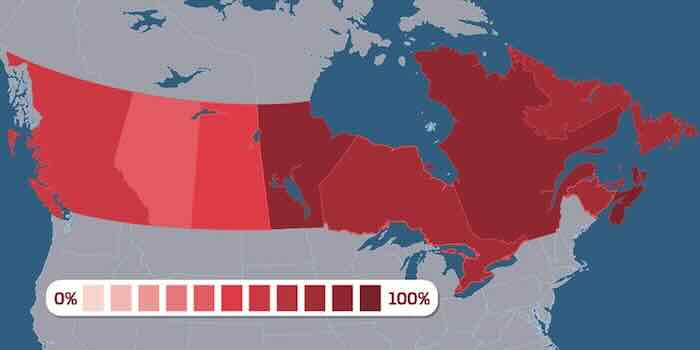By Fraser Institute ——Bio and Archives--January 11, 2024
Canadian News, Politics | CFP Comments | Reader Friendly | Subscribe | Email Us

TORONTO—Combined federal and provincial debt in Canada has nearly doubled from $1.18 trillion in 2007/08 (the year before the last recession) to a projected $2.18 trillion this year, finds a new study released today by the Fraser Institute, an independent, non-partisan Canadian public policy think-tank.
“Government debt—federally and in most provinces—has grown substantially over the past 16 years, creating serious fiscal challenges for Ottawa and provincial governments in the years ahead,” said Jake Fuss, director of fiscal studies at the Fraser Institute and co-author of The Growing Debt Burden for Canadians: 2024 Edition.
The study specifically measures net debt, which is a measure of the total debt of the federal and provincial governments minus financial assets held by the governments. It is a common measure of indebtedness.
The study finds that not only has Canada’s projected combined government debt (the federal debt and the provincial debt of all 10 provinces) nearly doubled since 2007/08, the year before the 2008 financial crisis, but the combined debt now equals 76.2 per cent of the Canadian economy.
Newfoundland and Labrador has the highest debt-to-GDP ratio among the provinces at 41.6 per cent in 2023/24, while Alberta recorded the most substantial increase in its debt-to-GDP ratio between 2007/08 (-13.4 per cent) and 2023/24 (9.0 per cent)—a hike of 22.4 percentage points. Consider that Alberta’s provincial debt-to-GDP in 2023/24 remains the lowest in the country, while Quebec, which was the longstanding most indebted province, now has a debt-to-GDP ratio of 39.2 per cent.
Crucially, on a per person basis, the combined debt (including provincial debt plus a portion of the federal debt) this year ranges from a low of $42,293 in Alberta to a high of $67,471 in Newfoundland & Labrador. Ontarians have the second-highest combined debt per person ($60,609) in 2023/24.
“It’s important for Canadians to understand the magnitude of the country’s combined government debt because deficits and debt today result in higher taxes in the future,” said Fuss.
Media Contact:
Jake Fuss, Director, Fiscal Studies, Fraser Institute
To arrange media interviews or for more information, please contact:
Drue MacPherson, Fraser Institute
604-688-0221 ext. 721
drue.macpherson@fraserinstitute.org
View Comments
The Fraser Institute is an independent Canadian public policy research and educational organization with offices in Vancouver, Calgary, Toronto, and Montreal and ties to a global network of 86 think-tanks. Its mission is to measure, study, and communicate the impact of competitive markets and government intervention on the welfare of individuals. To protect the Institute’s independence, it does not accept grants from governments or contracts for research. Visit fraserinstitute.org.
Follow the Fraser Institute on Twitter | Like us on Facebook